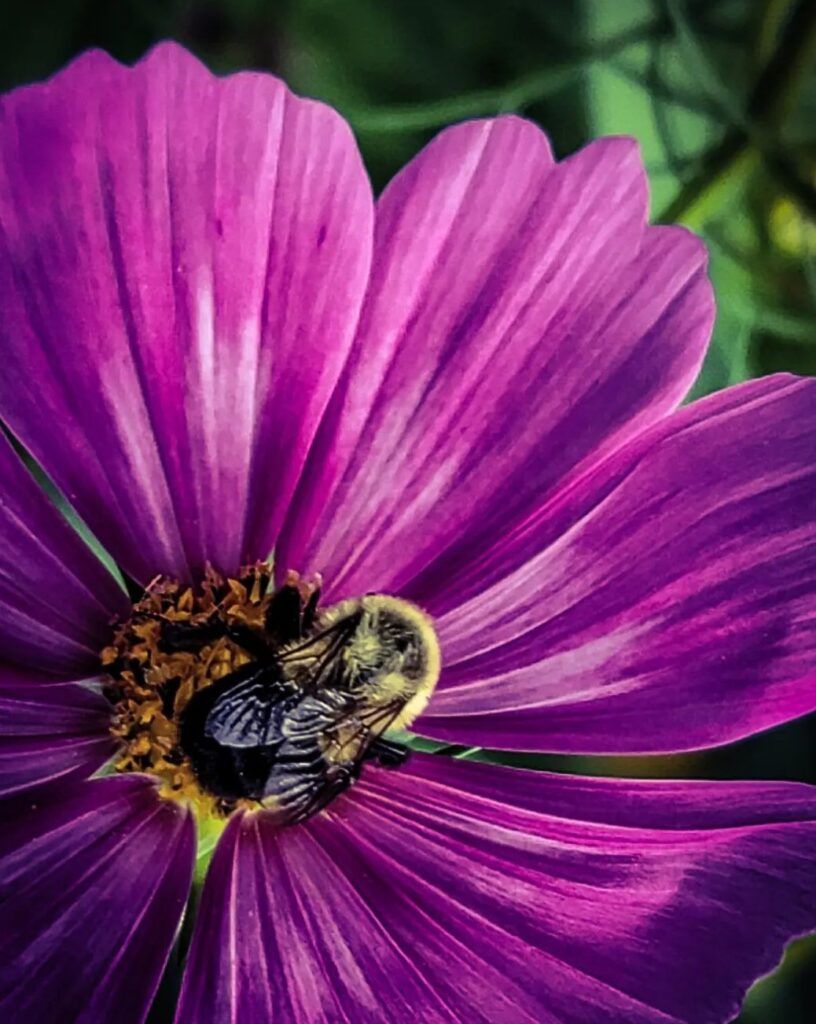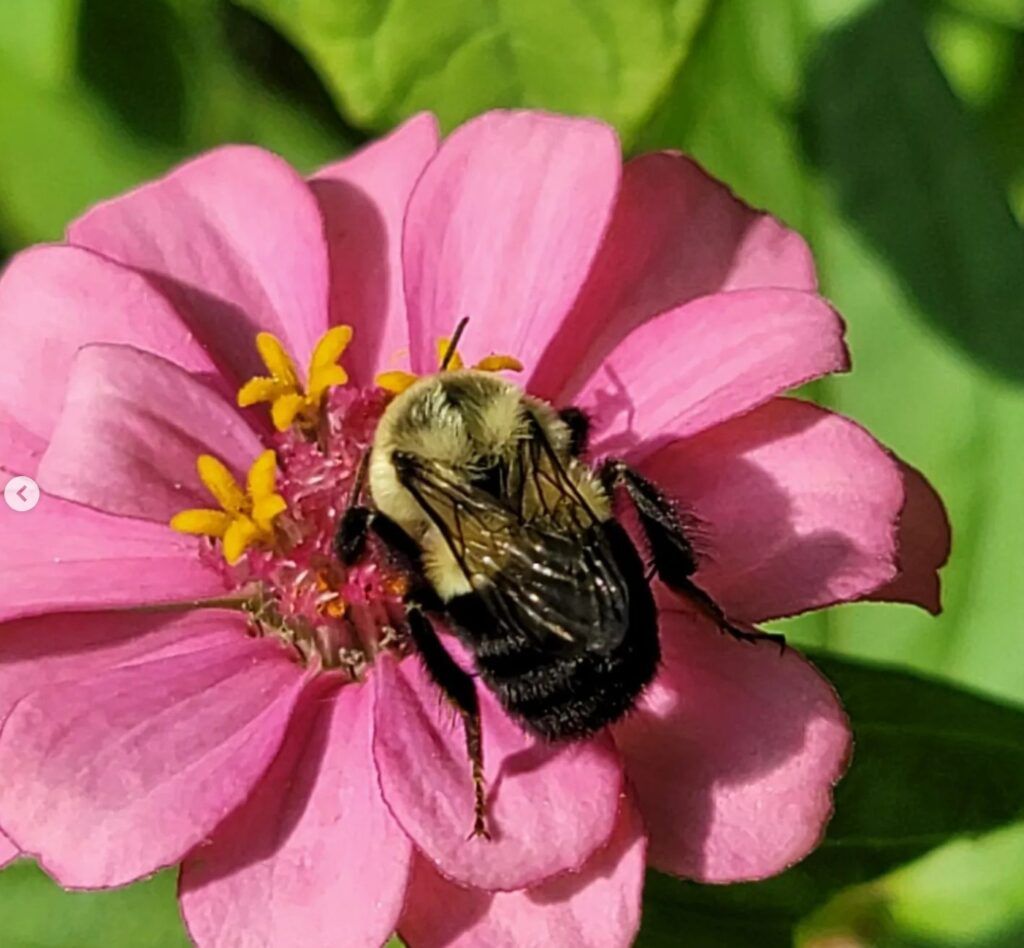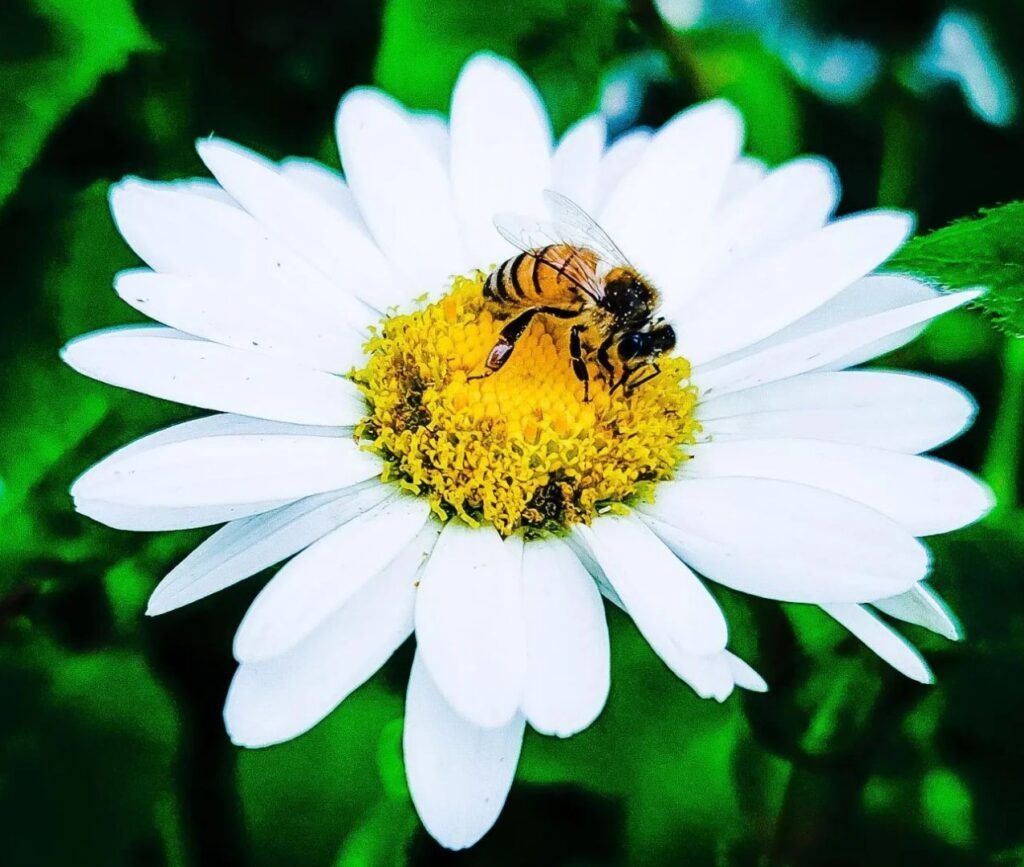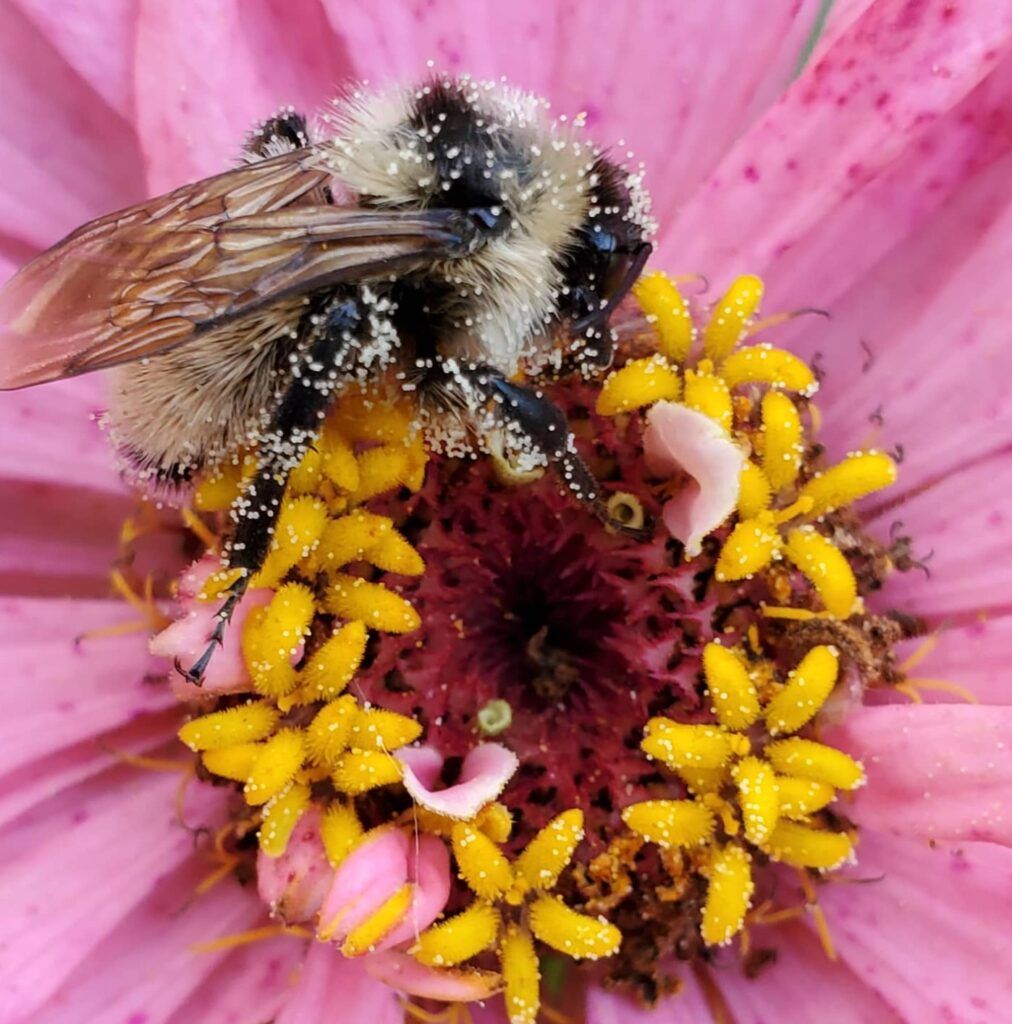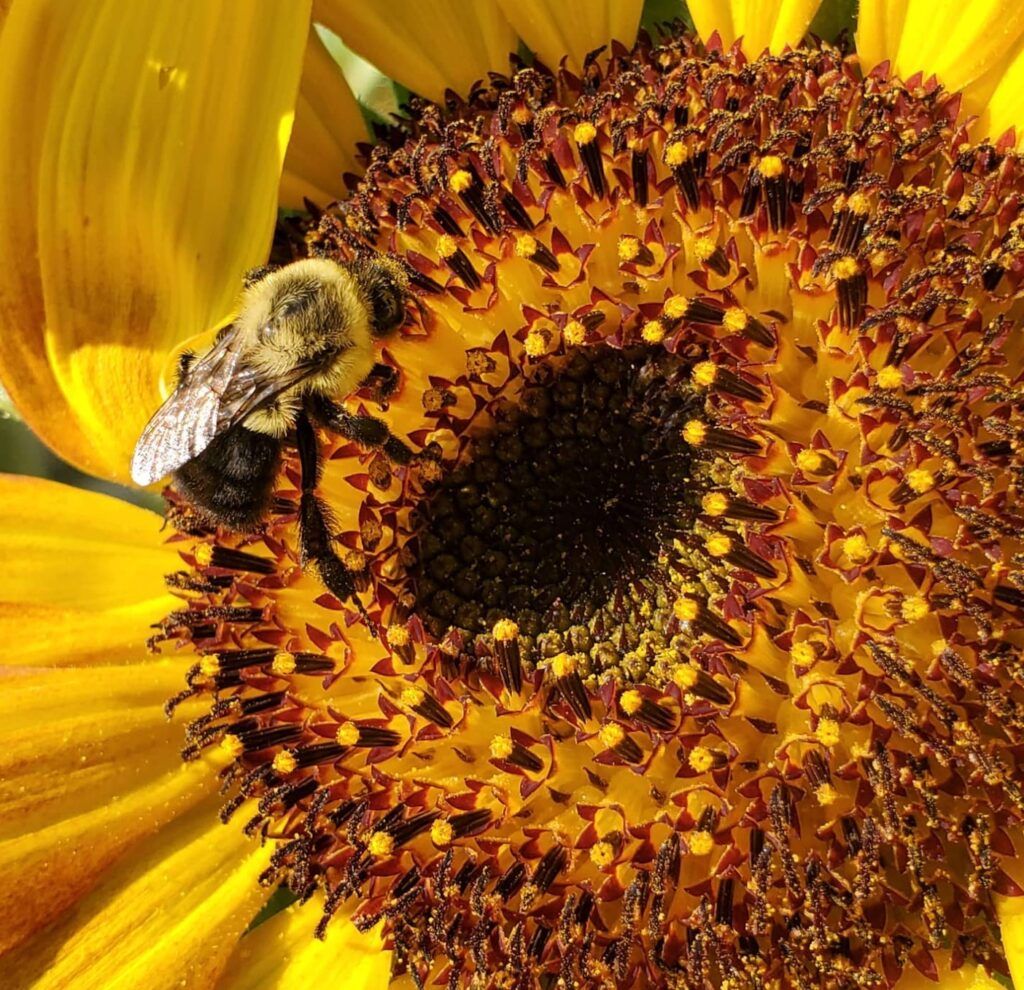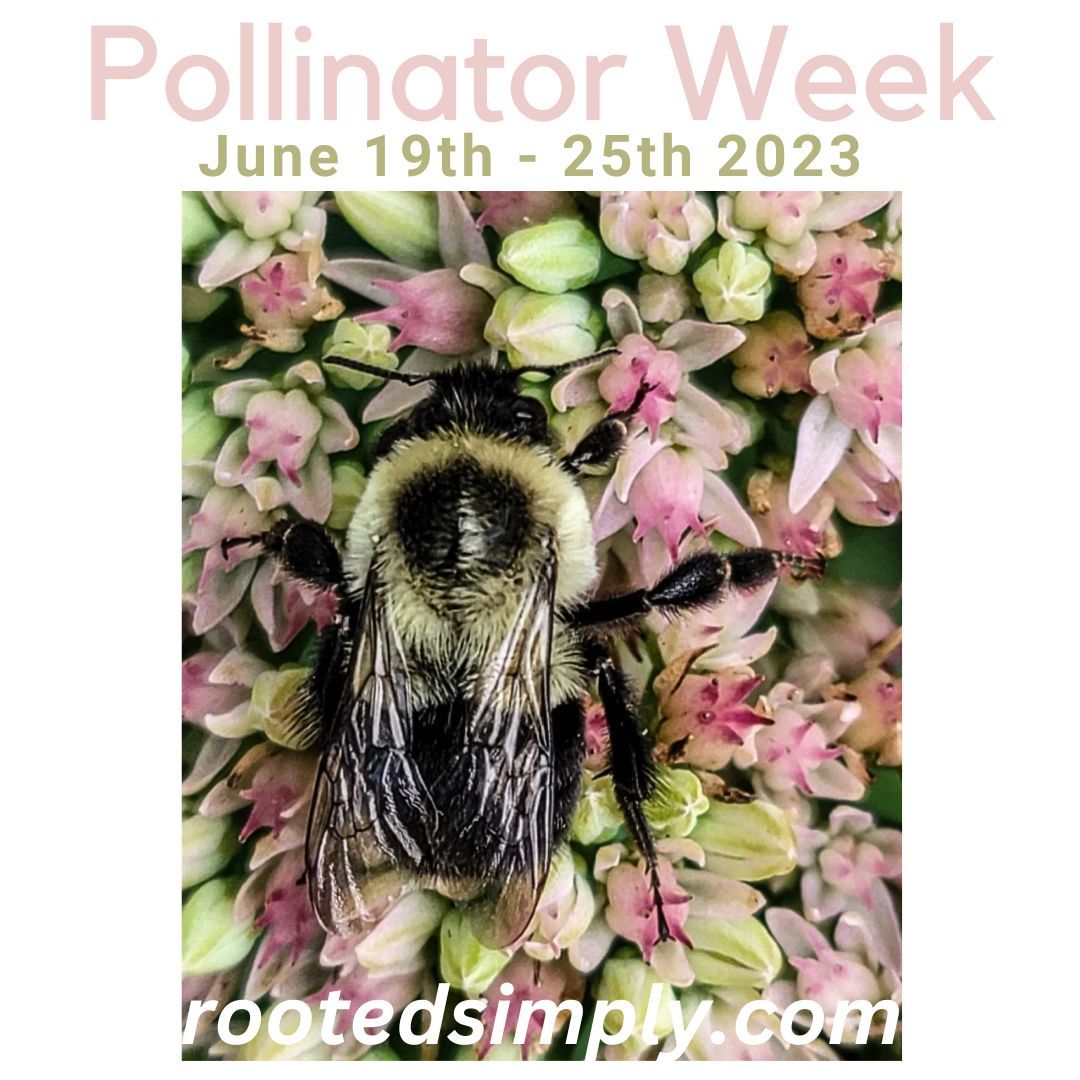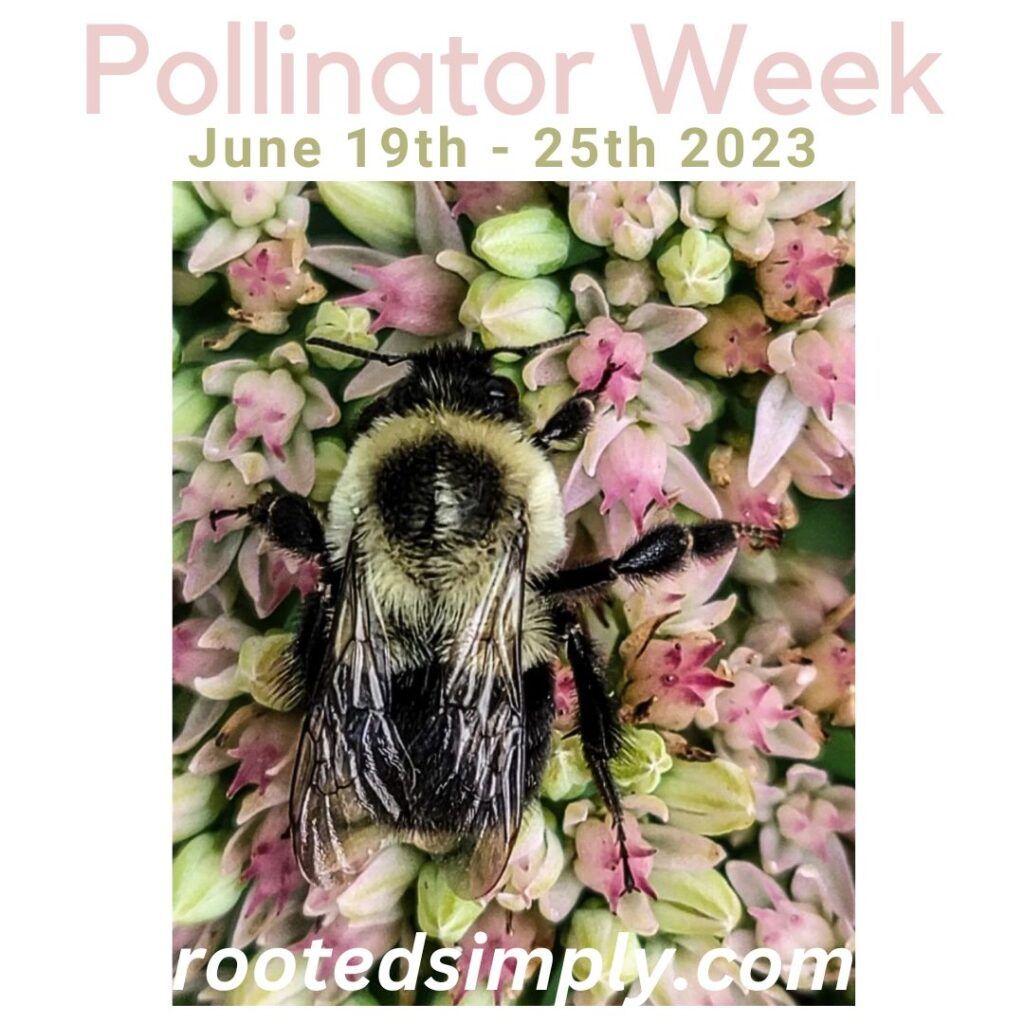
Close to 90% of all flowering plants are pollinated by animals. A vast majority of these pollinator species are insects, such as bees and butterflies, but animal pollinators can also include certain species of birds and mammals.
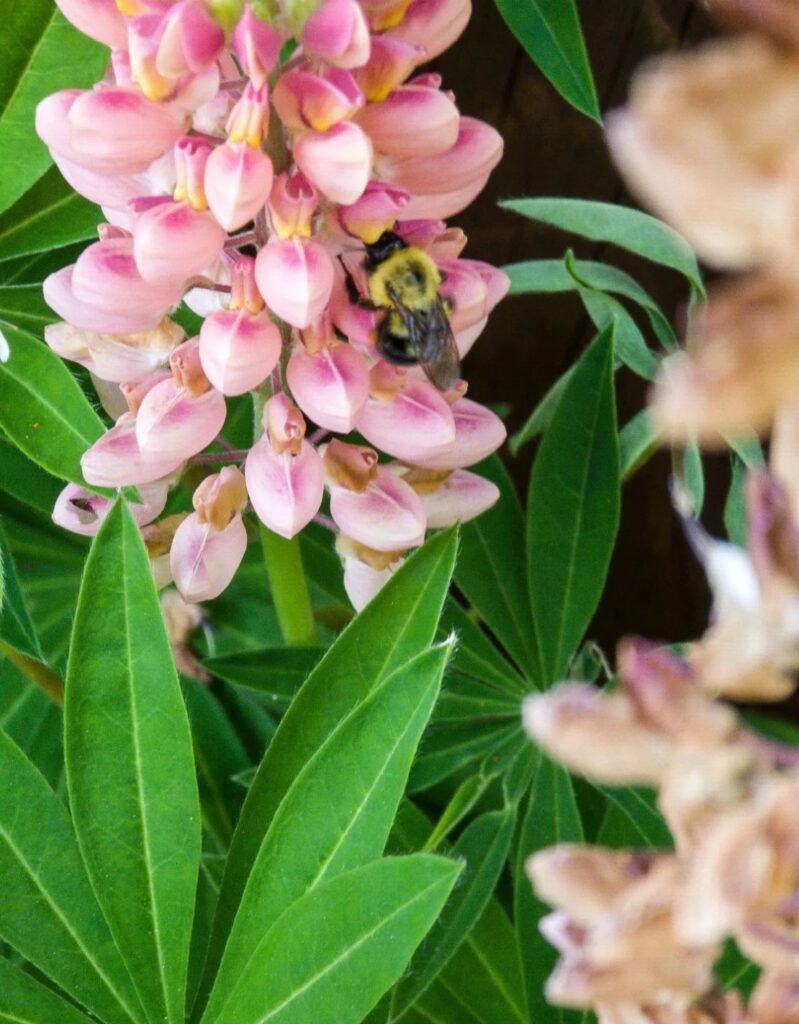
I enjoy hunting Bumblebees, with my camera. This is one of the first of the season. Caught him while we were finishing watering tonight. It is in this space that I am most calm watching God’s creation at work.
Western honeybees, Apis mellifera, are the most common species of honeybee in the world. Among the first domesticated insects, its cultural and economic impact on humanity has been vast and far-reaching, providing honey, wax, and its services as a pollinator. The western honey bee faces challenges worldwide, such as colony collapse disorder, and populations are thought to be decreasing. Creating pollinator-friendly gardens are important for the ecosystem.

Many styles of gardens promote pollinators. And while I love to be in any garden setting my favorite is the Prairie Garden. The ideals of a Prairie Garden are rooted in the conservation of native plants and the restoration of characteristic vegetation grounded in ecology.
Prairie Gardens rely on the repetition of vegetation in a less formal manner. A true rendering of the Midwestern scenery. Prairie Gardens share many characteristics to a meadow garden. One main difference is the amount of moisture. A meadow tends to be more damp whereas the Prairie Garden is a bit more dry. Another difference is the use of more native grasses in the Prairie landscape.
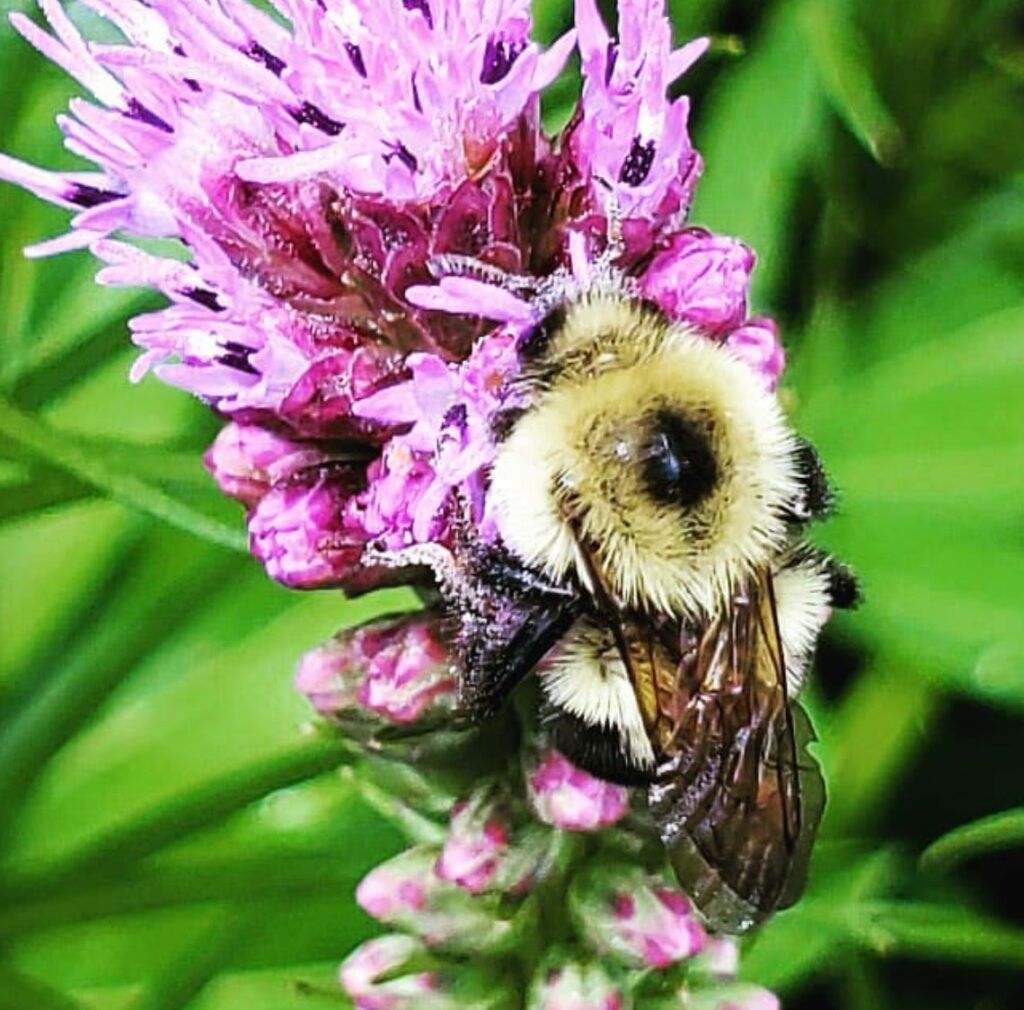
Whichever way you go, these gardens create harmony in our ecosystem by connecting the prairie, woodland, and wetland of the Midwest landscape. They are comprised of hardy plants that are self-maintained and attached to numerous pollinators.
Some of my favorite plants for a Prairie Garden are Black-eyed Susan, Purple Prairie Clover, False Sunflowers, Coneflowers, Cornflowers, Yarrow, and be-balm.
How are you working in plants that are pollinator-friendly this week as we celebrate National Pollinators Week?
